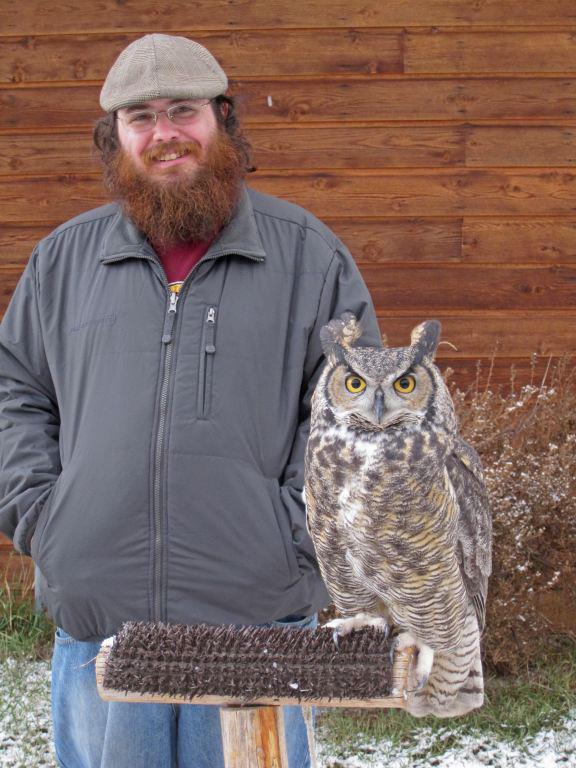All photos by Veckinon
I help design, build, and maintain a variety of specialized equipment used in wildlife biology experiments throughout the world. One of the things I help design and build is robotic taxidermied predatory birds. These birds are used in experiments that record and analyze the alarm calls of various different animals. Alarm calls are noises that animals make to warn each other of nearby predators. So, in essence, these experiments are designed to discern ‘animal language.’
The Experiment
Many hours before an experiment, the raptor can be set up and left in the wilderness disguised as a tree stump. The researchers can then remotely lower the stump disguise and activate the robot. The researchers use vast arrays of audio recorders placed at precise locations in the wilderness and record the responses of potential prey animals. These recorders are synchronized to GPS time signals and have ambient temperature sensors. The multiple audio signals are analyzed and using the speed of sound, and the time and location information from the recorders, the approximate location of any animal that made noise can be triangulated. So far, these experiments have been performed in Montana and New York here in the states, as well as in Scotland and parts of South America, internationally.
The Experiments typically consist of a roboticized bird, that is mounted on top of a disguised box. The box houses an Arduino microcontroller, a remote-control interface, a geared motor and all of the connectors necessary to attach the devices together. The geared motor is attached to a spool that runs a pulley system. This pulley raises and lowers a curtain that has been painted to look like a tree stump by art students at our local university and can be raised and lowered with a remote control.
Inside the box. This is typically disguised by the camouflauge curtain.
Radio transmitter and relay
The birds come from our local university biology departments freezer and are typically donated specimens who were found dead. No birds were killed to construct the robots. We worked closely with many local taxidermists, both amateur and professional (being Montana, there was no shortage of those) and indicated our needs for each bird.
I was also involved in the production of the GPS time synchronizer and sensor system for this project and to be honest, that was much more challenging than the work on the birds, although I am sure the taxidermists would disagree with me.
The Job
Recently, some of our setups were sent to Cornell to gather data from New York state. Once they returned it was discovered that one of the birds had lost its head in transport and that the Arduino was malfunctioning. My neighborhood friendly wildlife biologist buddy, Erick dropped the bird off at my house for some repairs.
Poor guy
The bird he dropped off was actually our prototype model, RoboBubo. A great horned owl and the first robo-raptor we ever created. RoboBubo was one of our simplest models, just its head moved. Being our prototype it is also admittedly a little rough around the edges, but it gets the data!
I remember before we built this model, we went to a raptor refuge located a few miles out of town called Raptors of the Rockies. This was a place where sick or injured raptors were taken to be cared for and rehabilitated. We studied the movements of real great horned owls to mimic their timing. And we got to hang out with a lot of other cool birds as well. It was a really amazing place.
 Me and Jillian. One of the live birds we got to meet at the refuge! 2011
Me and Jillian. One of the live birds we got to meet at the refuge! 2011
Anyway, I replaced the Arduino in the control box and re-set the head on RoboBubo and tuned up a couple of things and he was looking pretty sharp.
A short video
https://youtu.be/qTZEGtikYWo RoboBubo having a look around. (click to play)
arduino
Thanks for looking, I hope you enjoyed. Look me up sometime. Best wishes, @veckinon